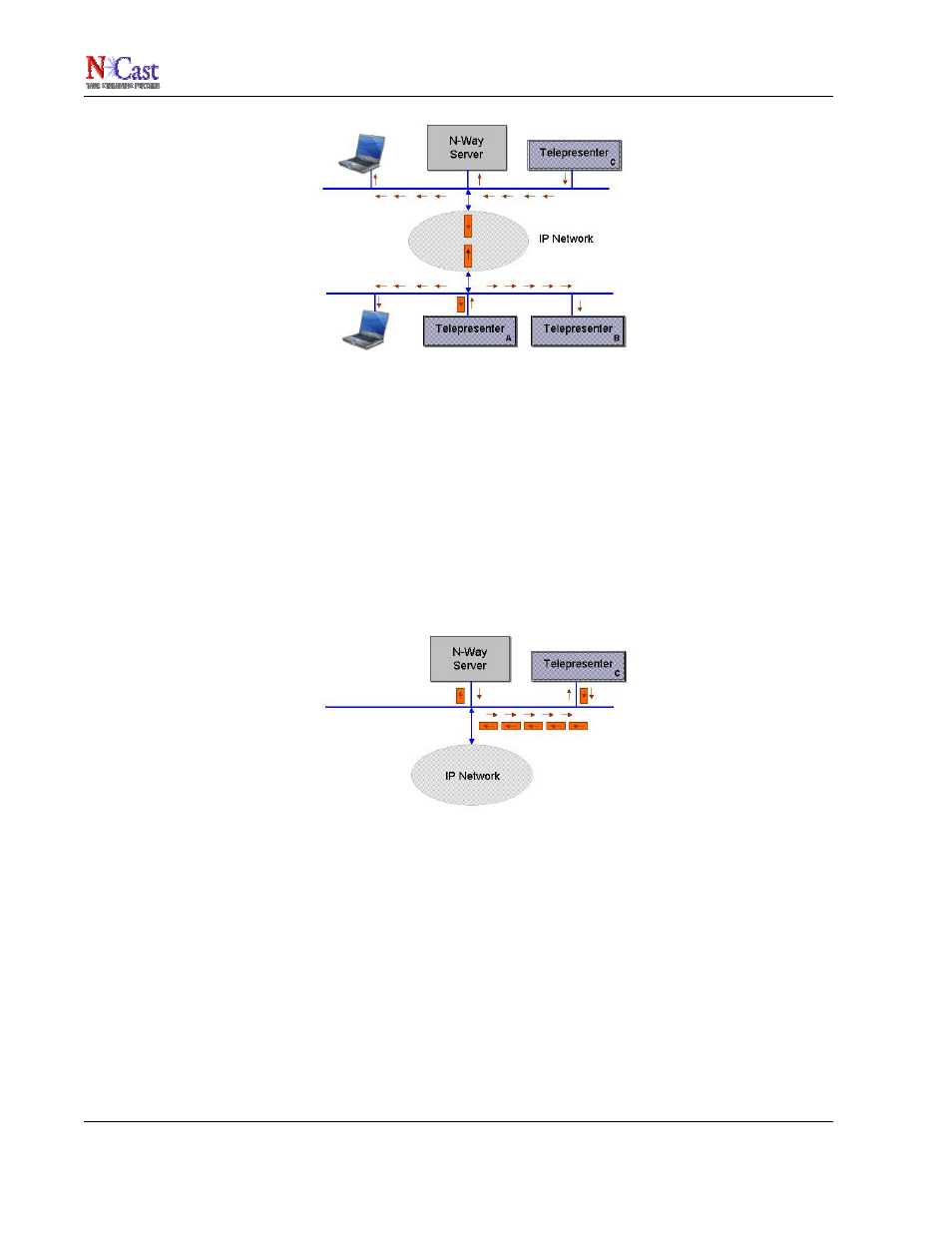Ncast n-way reference manual – NCast N-Way Server User Manual
Page 30

NCast N-Way Reference Manual
6.4.N-W
AY
R
ESTRICTION
– S
ERVER
AND
C
LIENT
ON
THE
S
AME
LAN
As an example of what might go wrong when these rules are followed, consider the case where a Telepresenter
and the Server are located on the same LAN.
An RTP packet generated by Telepresenter “C” is encapsulated and sent via the unicast tunnel to the Server. The
Server then unpacks this packet and places it on its local LAN (same LAN as Telepresenter “C”). Here’s where a
packet storm begins.
The N-Way Client on Telepresenter “C” sees a multicast packet with a validly joined multicast group, and with a
source address of its own machine. Passing these two tests permits the Client to encapsulate the packet again
and forward it once more to the Server. An endless feedback loop has been created and a packet storm on the
LAN begins, taking down all other traffic on the LAN.
6.5.N-W
AY
R
ESTRICTION
– T
WO
T
UNNELS
ON
THE
S
AME
LAN
A second configuration situation, which is automatically prohibited by the server is the case where two
Telepresenters on the same LAN try to establish individual tunnels to the server.
In the diagram below we assume that Telepresenter “A” has established a tunnel (shown as orange
encapsulation packets) and Telepresenter “B” has established a tunnel (shown as yellow encapsulation packets).
Why can this cause a problem?
Let Telepresenter “A” create a media packet which is encapsulated and sent via the unicast tunnel to the server.
This packet is also multicast on the LAN so Telepresenter “B” gets a copy directly from “A” via the LAN. The
Server receives the packet, places it on its local LAN, and notes that Telepresenter “B” has asked for traffic from
this particular multicast address. It encapsulates it for transmission to “B” (the yellow packets) and shortly
thereafter it arrives at “B”. The fact that now a duplicate packet has arrived at “B” is not a serious problem (other
than causing double the traffic on the LAN. The media processing procedures will discard the packet because the
sequence number has already been used.
NCast Corporation
Revision 1.3
Page 30
